1. Setup¶
SLEAP uses deep neural networks to learn how to predict poses from data. Training these models is much faster when using a GPU (1) for acceleration.
- Graphics processing unit. This is a hardware component that parallelizes computations across thousands of cores, making them particularly effective for the algorithms used to train deep neural networks.
For this tutorial we are providing you with free access to GPU-equipped Virtual Machines (VMs), which are essentially computers running in the cloud.
Set up your VM¶
-
Go to Chrome Remote Desktop and sign in with any Google account (work or personal).
-
Go to Set up via SSH → Begin.
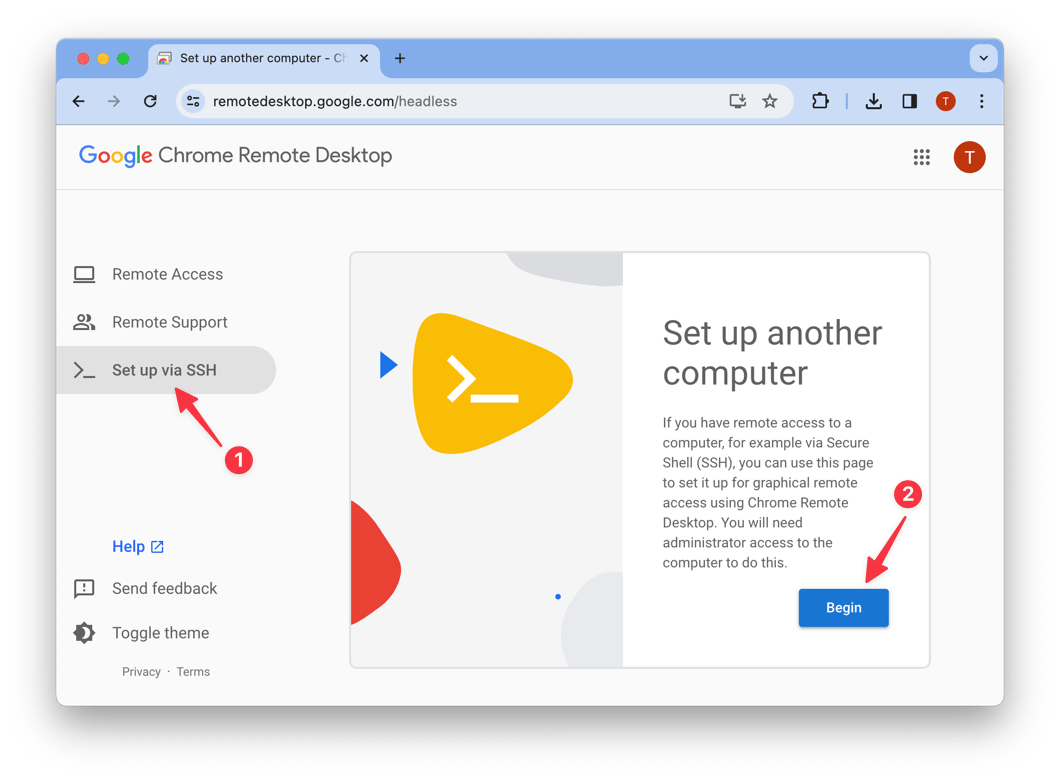
-
Click through Next → Authorize. You do not need to download anything from the links.

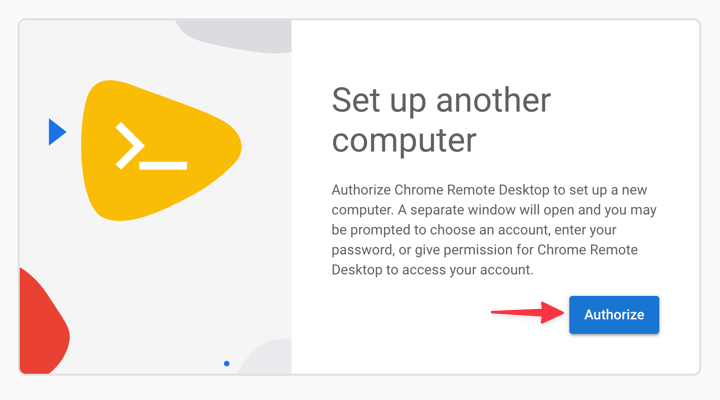
-
Click on the button to copy the code for Debian Linux.
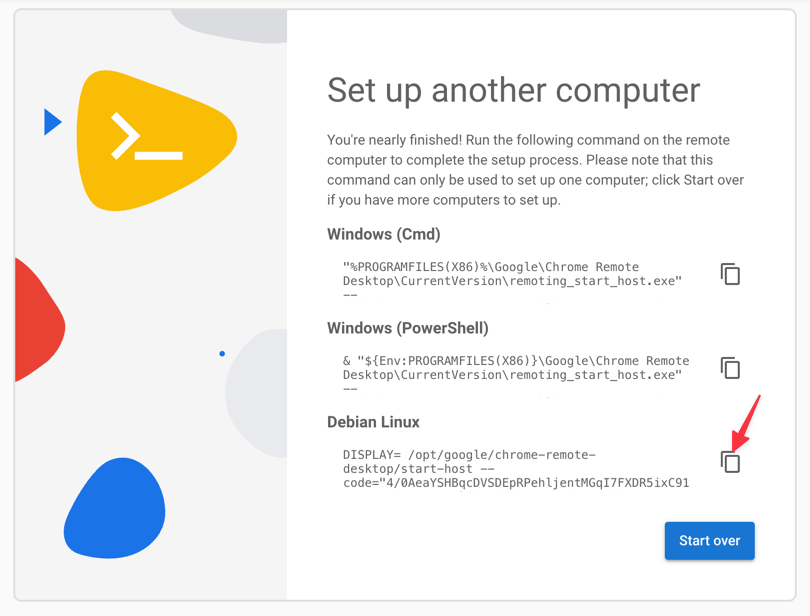
-
Go to the VM request website , enter your email and paste the code (Ctrl+V on PC or Cmd+V on Mac) from the previous step, then click Submit.
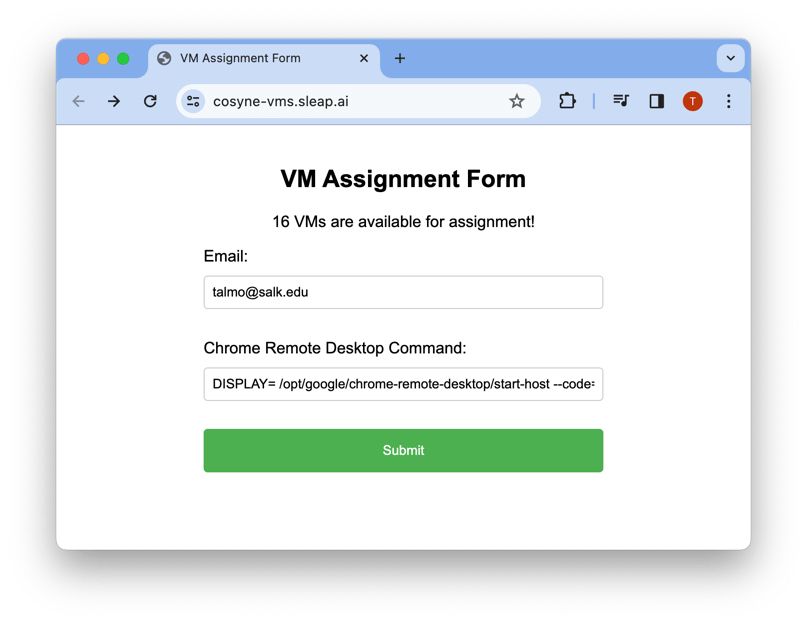
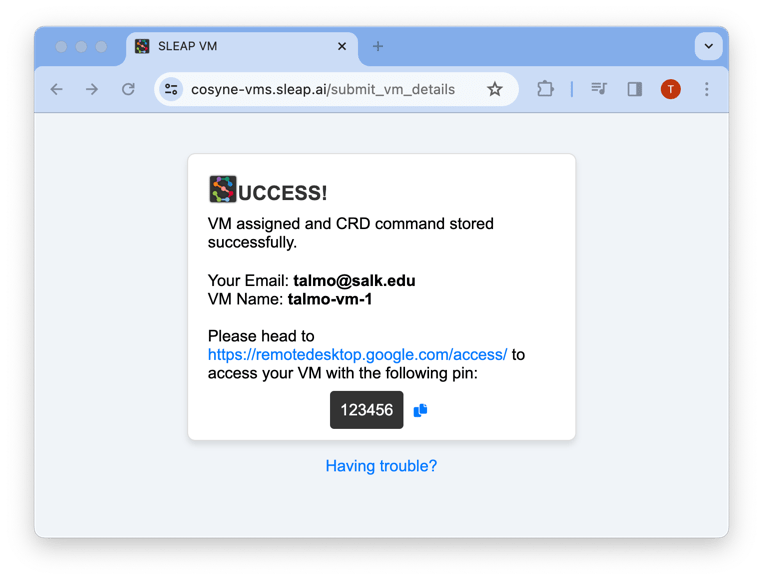
-
Go back to Chrome Remote Desktop → Access and you will see your VM. Click on the VM's name to connect.
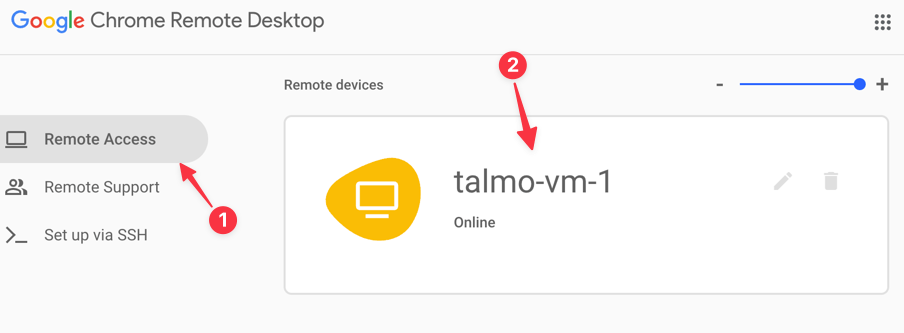
-
The first time you connect to the VM, you will be prompted for the PIN from the VM request website. Enter it and check Remember my PIN on this device.
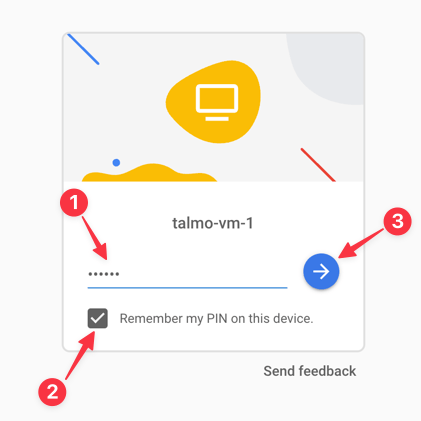
-
You did it!
If everything went well, you will see the VM's desktop in your browser:
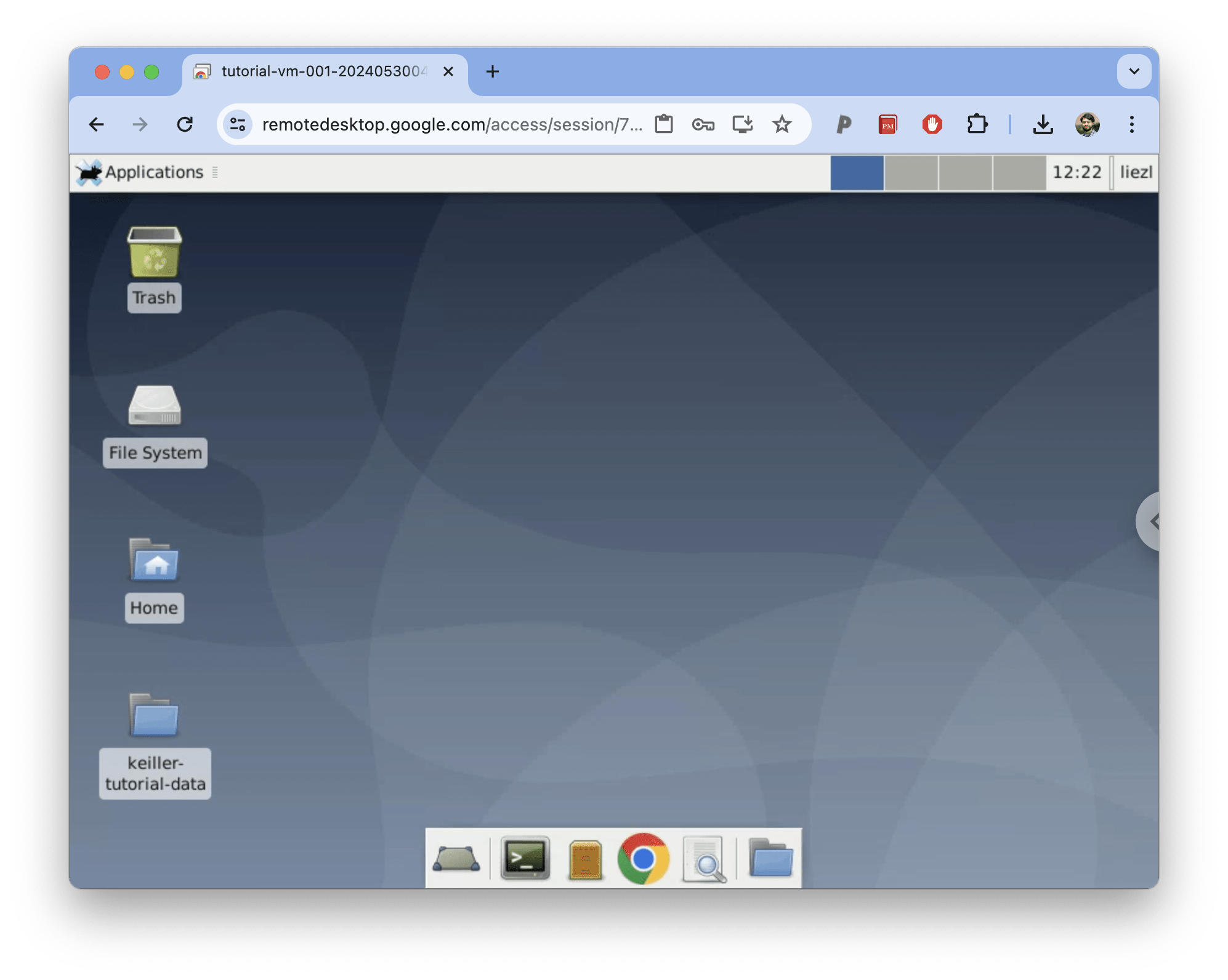
Starting SLEAP in the VM¶
To launch SLEAP, first open the terminal by right-clicking in the background of a folder and clicking Open Terminal Here:
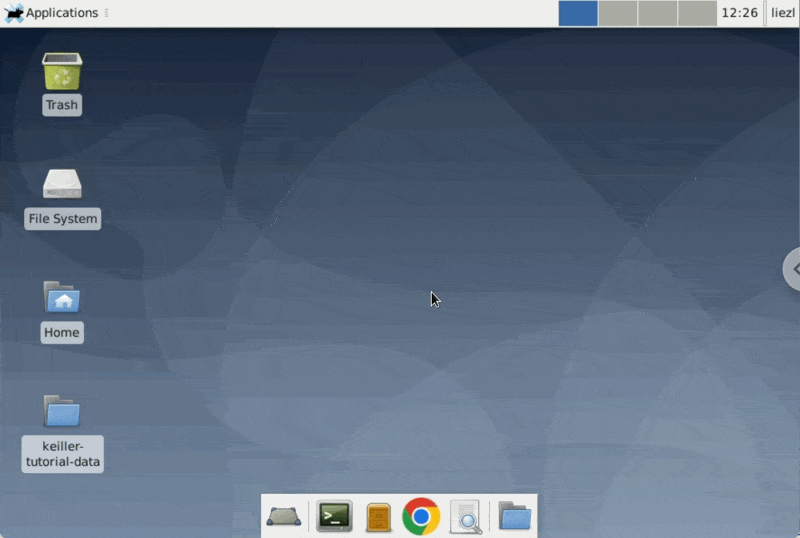
Then type in the magic command followed by Enter:
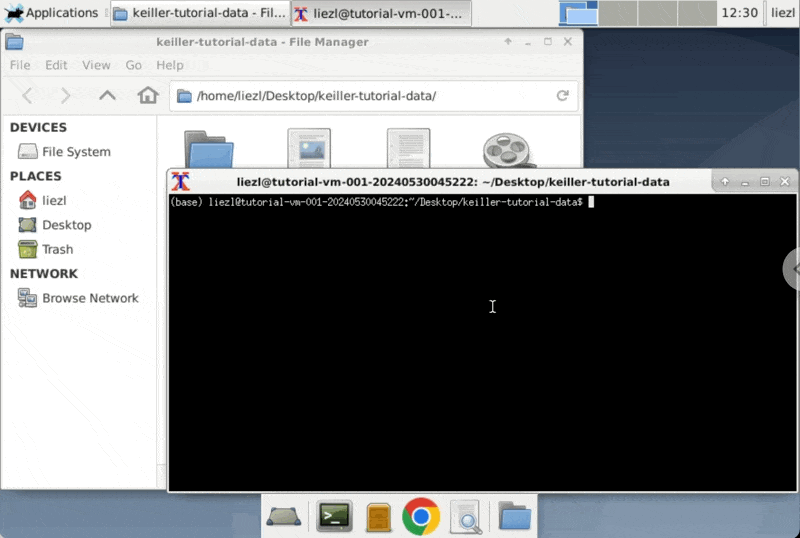
Et voila, the SLEAP interface will open:
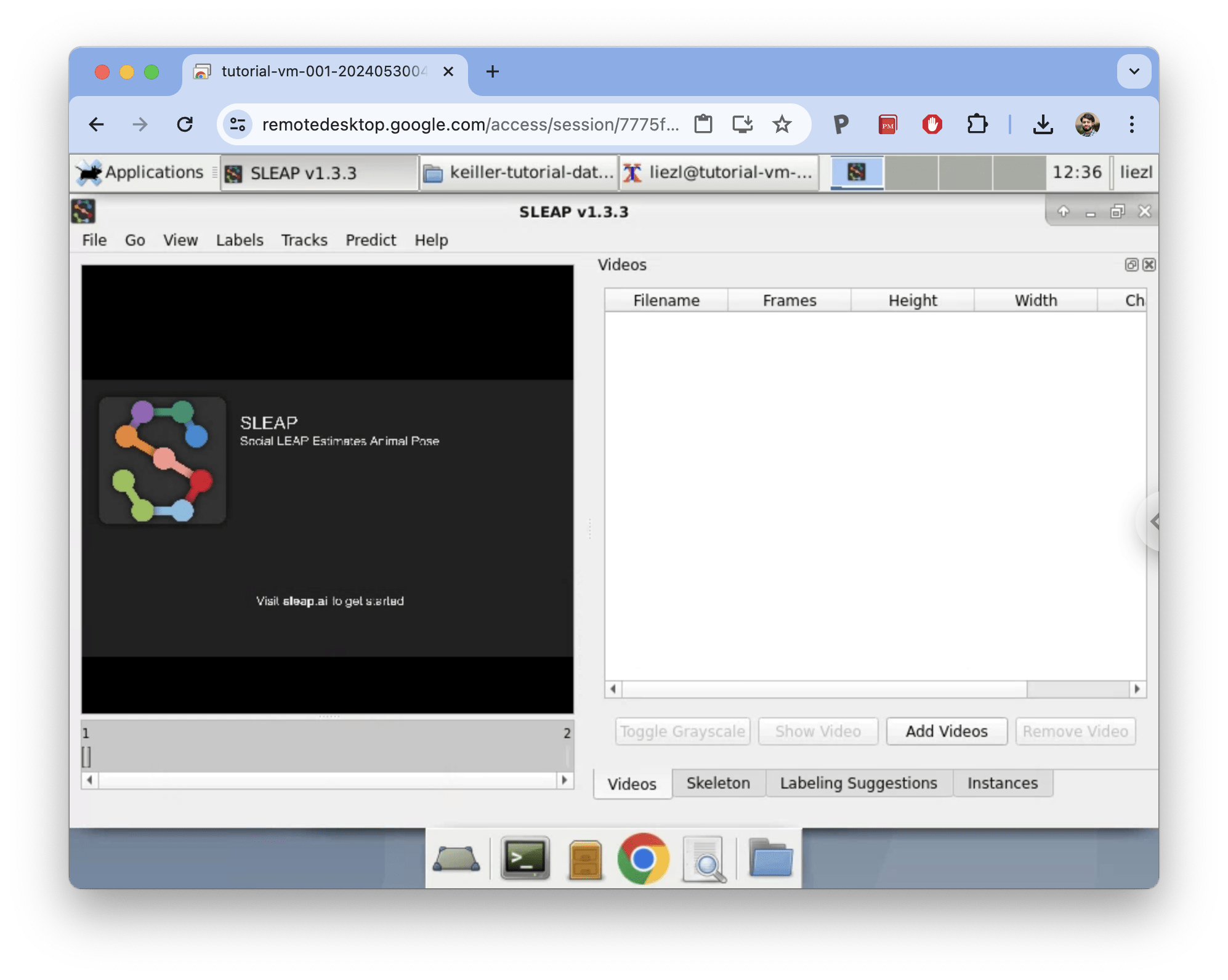
Tip
It'll be easier to keep the VM Chrome Remote Desktop in fullscreen:
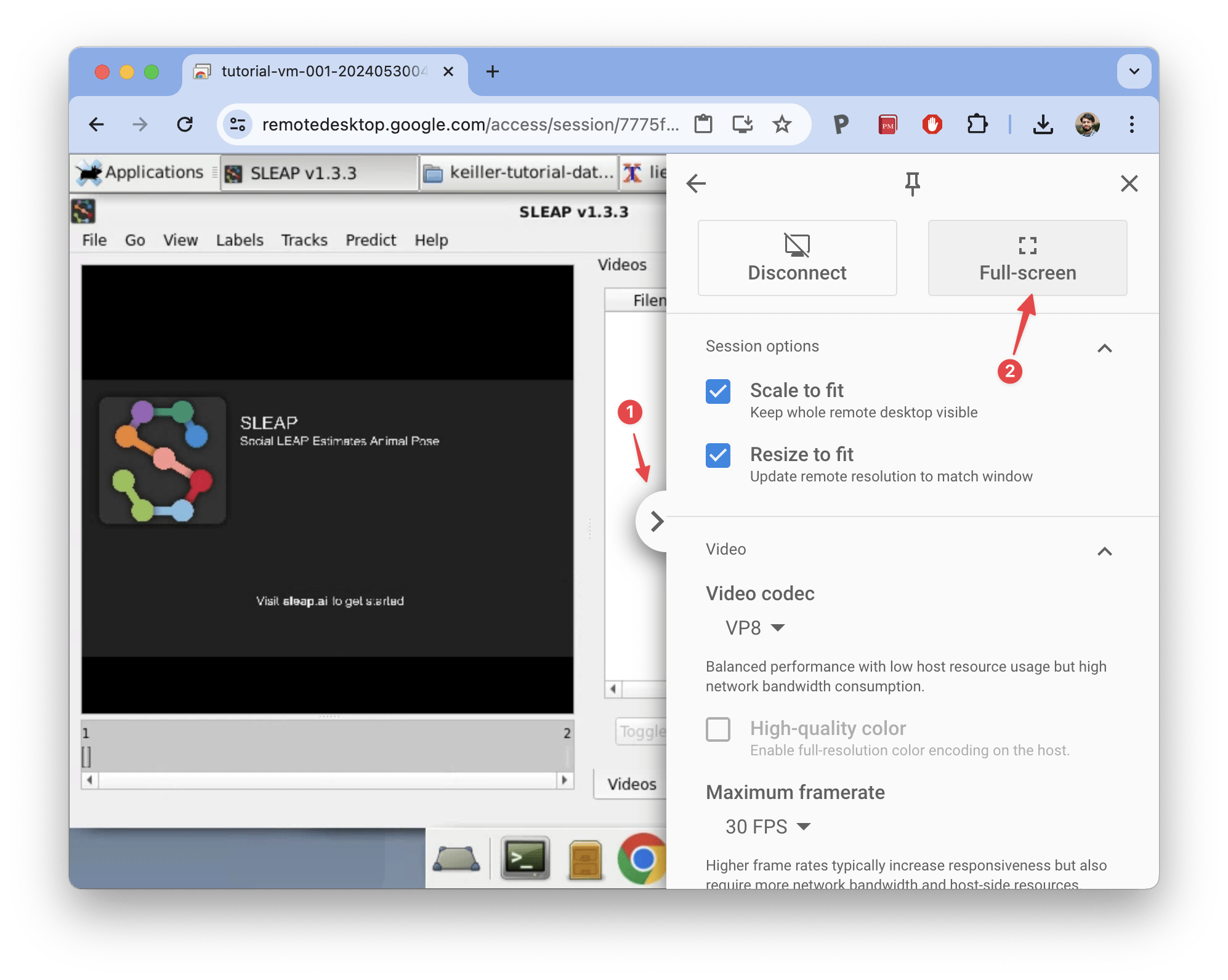
You can open the tutorial website inside the VM as you're working through it so you don't have to switch in and out of fullscreen mode.
To do this, just launch Google Chrome from the bottom dock and navigate to keiller.sleap.ai.